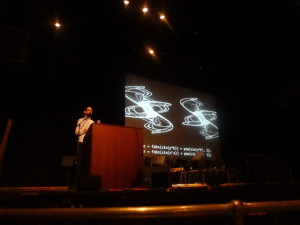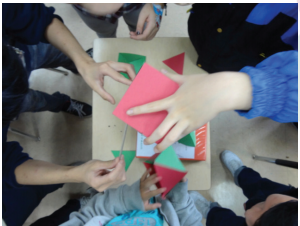 We recently hosted artist and computer programmer Nathan Selikoff at our school, and he spoke to our students about art, mathematics, and technology.
We recently hosted artist and computer programmer Nathan Selikoff at our school, and he spoke to our students about art, mathematics, and technology.
Nathan Selikoff is an award-wining artist and an organizer of the Bridges Math and Art conference. In his talk, “Art, Chaos, and Computation”, Nathan provided an engaging overview of the history of computation in art while talking about his personal experiences conceiving and creating mathematical art.
The talk left quite an impression on our students, many of whom were not aware that mathematicians and computer scientists could also be artists. Students left the talk interested in experimenting with their own mathematical creations, and they were excited to play with the programs the artist generously provided.
A few student quotes nicely summarize the impact of the talk:
It made me want to learn more about the codes and the mathematical equations that make up the paradoxes of the chaotic art pieces.
This really makes me wonder about the extent of art that can be created. I’m curious to find out what I’ll be able to program.
The talk inspired me to create my own art with math equations.
Thanks to the artist for such a great visit! You can find out more about Nathan Selikoff here. And be sure to check out the Bridges Math and Art conference.

